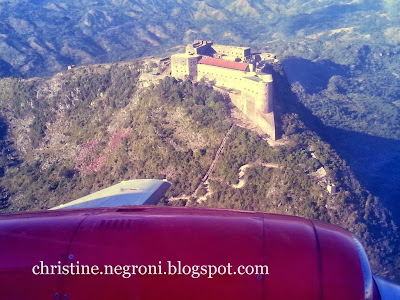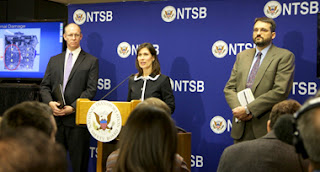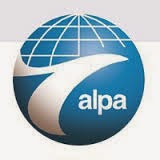| Lacinda and Spud Homfeld at the Hangar Hotel |
Earlier this week, Lacinda and Spud Homfeld chose to celebrate their 36 years of togetherness by pursuing their separate interests with a two night stay at the aviation-themed hotel. For a few hours each day, Spud and Lacinda could sit in the sun on the hotel’s outdoor balcony overlooking runway 14/32 and watch jets, planes and the occasional helicopter take off and land.
Later in the day the couple could mosey into downtown Fredericksburg for a meal and some shopping in the perfectly preserved historic town center.
Later in the day the couple could mosey into downtown Fredericksburg for a meal and some shopping in the perfectly preserved historic town center.
Lacinda ought to be a wing-nut, her father was an air traffic controller in Houston. She told me when she was little, her dad used to take her to the TRACON where he worked so she could see what he did for a living. Still, she was 30 before she ever flew on an airplane and the experience did not ignite any passion within her.
Her husband Spud, on the other hand, loves everything about airplanes. On a visit to Fredericksburg over Labor Day weekend, he was astonished to see the Gillespie airfield packed with planes. He decided to return and spend some time as a guest at the Hangar Hotel.
| The Hangar Hotel has a WW2-era theme |
When I ask Dick Estenson, a private pilot as well as the owner of the hotel what attractions might lure aviation geeks to visit, he points out Fredericksburg’s proximity to the Mooney Aviation Company - for the past 60 years located in nearby Kerrville - and the Museum of the Pacific War. Mooneys have been out of production for the past five years, so I have my doubts about how much tourist interest the factory is generating at present. When it comes to the War Museum, Estenson has a point.
The Museum of the Pacific war isn't one museum; it is several - along with a large outdoor gallery detailing the role of the nine U.S. presidents who served in World War 2 and a Japanese garden that in its quiet way urges an end to conflicts like the one that is the centerpiece here.
| A Japanese float plane on display at the museum |
Naturally, the museum draws a large number of visitors for whom the Second World War is part of their personal history. That specific group of museum goers diminishes each day but the museum recently completed a major renovation that visitors of all ages will find compelling.
| One of the Lockheed JetStars used by President Johnson |
Under a large canopy not far from the house that was called the Texas White House, sits the first plane to be assigned to carry a Vice President, a Lockheed JetStar VC-140. After Johnson became president, he continued to use the four-engine jet to get to and from the farm which has its own 6,300 foot asphalt runway.
| Park Ranger Russ Whitlock at the Texas White House |
Of course the history of Fredricksburg goes back much farther. It was settled by German immigrants in the 1840s and there was an unusually good relationship between the new arrivals and the Comanche who lived on the land at the time. Much of the German heritage is preserved in the downtown area. On the lengthy main street, locally owned businesses display German/Texan products and the blended culture is evident in the architecture.
All this, and the 36 wineries within 25 miles of Fredricksburg on the Texas wine trail, explain how couples who differ about the romance of aviation can agree to spend time together, as Lacinda and Spud Homfeld did, celebrating their anniversary from an airport hotel.













































.jpg)


.jpg)







.jpg)








